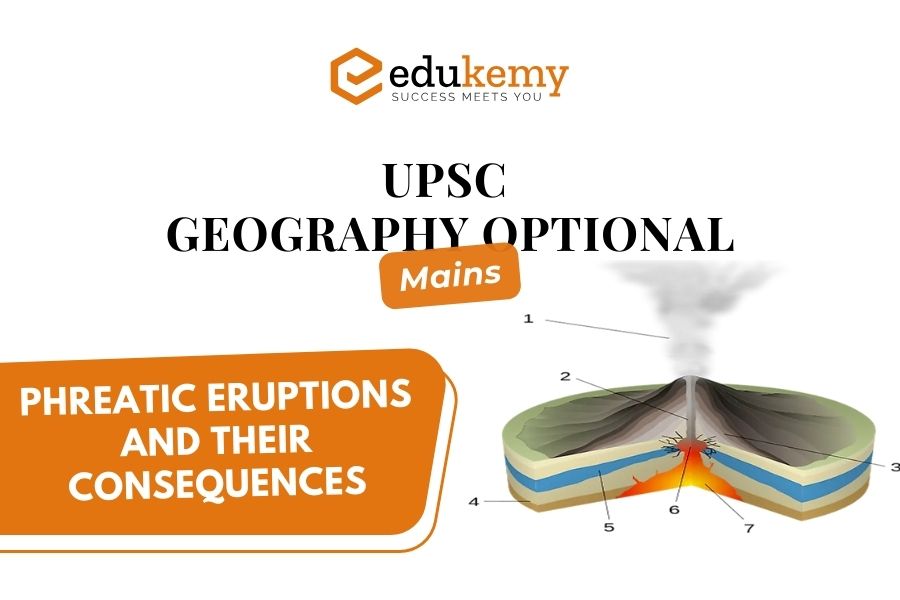
This detailed analysis delves into phreatic eruptions and their aftermath, a topic crucial for UPSC Geography Optional Mains examination in 2019. Providing a comprehensive overview, it explores the characteristics and repercussions of these volcanic events without relying on technical terminology. By examining case studies and historical accounts, the essay elucidates the destructive potential of phreatic eruptions, highlighting their impact on local communities and the environment. Through a balanced approach, it evaluates the factors contributing to the severity of these eruptions and discusses measures to mitigate their consequences. This in-depth exploration equips candidates with essential knowledge to tackle questions related to volcanic phenomena, fostering a deeper understanding of geographical processes and their implications in the contemporary world.
Contents
Answer:
Introduction:
Phreatic eruptions, also known as steam-driven eruptions, occur when water comes into contact with magma, causing it to heat rapidly and turn into steam. This sudden expansion of steam leads to explosive bursts of rock, ash, and volcanic gasses.

Characteristics of Phreatic Eruptions:
- Sudden and Explosive: Phreatic eruptions are characterized by sudden, violent explosions.
- No Warning Signs: Unlike other types of volcanic eruptions, phreatic eruptions often occur without any precursory seismic activity.
- Short-lived: These eruptions typically last for a short duration, ranging from minutes to hours.
Cases of Phreatic Eruptions:
- Mount Ontake, Japan (2014): One of the deadliest phreatic eruptions in recent years, it resulted in numerous fatalities and injuries among hikers.
- White Island, New Zealand (2019): A phreatic eruption on White Island resulted in multiple fatalities and injuries among tourists visiting the volcanic island.
Consequences of Phreatic Eruptions:
- Ash Plumes: Phreatic eruptions generate dense clouds of ash and volcanic debris, posing respiratory hazards and damaging infrastructure.
- Pyroclastic Surges: Rapidly moving currents of hot gas and volcanic matter can cause severe burns and fatalities in affected areas.
- Lahars: The mixing of volcanic material with water can trigger lahars, fast-moving mudflows capable of burying settlements and causing significant destruction.
- Impact on Aviation: Ash clouds from phreatic eruptions pose a threat to aviation by reducing visibility and damaging aircraft engines.
- Environmental Impact: Phreatic eruptions can lead to soil and water contamination, disrupting ecosystems and agriculture in the surrounding areas. Social and Economic
- Disruption: Evacuations, infrastructure damage, and loss of life result in significant social and economic disruptions to affected communities.
- Long-term Hazard: Despite their short duration, phreatic eruptions can signal increased volcanic activity and serve as precursors to more significant volcanic events.
Conclusion:
While phreatic eruptions are typically short-lived, their consequences can be severe, impacting both human populations and the environment. Monitoring and preparedness are crucial to mitigate the risks associated with these unpredictable volcanic events. Additionally, continued research into volcanic processes and early warning systems can help minimize the impact of future phreatic eruptions.
In case you still have your doubts, contact us on 9811333901.
For UPSC Prelims Resources, Click here
For Daily Updates and Study Material:
Join our Telegram Channel – Edukemy for IAS
- 1. Learn through Videos – here
- 2. Be Exam Ready by Practicing Daily MCQs – here
- 3. Daily Newsletter – Get all your Current Affairs Covered – here
- 4. Mains Answer Writing Practice – here

